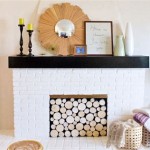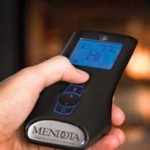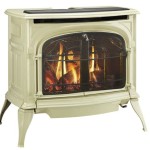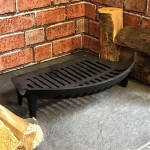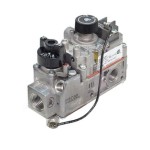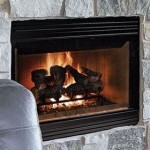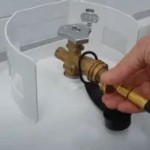TV Above Fireplace Mantel Ideas: A Comprehensive Guide
Mounting a television above a fireplace mantel is a common design choice that aims to consolidate focal points in a living space. This arrangement presents both aesthetic and practical considerations, requiring careful planning and execution to achieve a harmonious and functional result. This article will explore various aspects of this design trend, including key considerations, installation techniques, and design ideas.
Evaluating the Suitability of a TV Above Fireplace Mantel
Before proceeding with any installation, it is crucial to assess whether a television above the fireplace mantel is a suitable choice for a specific living space. Several factors influence this decision, primarily concerning viewing comfort, heat exposure, and structural integrity.
Firstly, the optimal viewing angle is paramount. Positioning a television too high can lead to neck strain and discomfort during extended viewing. The ideal viewing height is generally considered to be where the center of the screen is at eye level when seated. If the fireplace mantel necessitates a significantly higher mounting position, alternative locations for the television should be considered. This is especially important for individuals with pre-existing neck or back issues.
Secondly, heat exposure from the fireplace is a critical consideration. Televisions are sensitive electronic devices that can be damaged by prolonged exposure to high temperatures. The heat radiated from a fireplace, particularly a wood-burning one, can shorten the lifespan of the television and even cause irreversible damage. The type of fireplace, the frequency of use, and the insulation provided by the mantel all contribute to the extent of heat exposure. Gas fireplaces generally produce less radiant heat compared to traditional wood-burning fireplaces, making them a potentially safer option for this type of installation. Electric fireplaces, with their controllable heat output, offer even greater flexibility.
Thirdly, the structural integrity of the wall and mantel is vital. The wall must be capable of supporting the weight of the television and the mounting hardware. This typically involves locating wall studs and securely attaching the mounting bracket to them. The mantel itself should also be sturdy enough to bear any additional weight placed upon it, if any component of the mounting system relies on the mantel for support. Consulting with a structural engineer or experienced contractor is recommended for ensuring the safety and stability of the installation, especially for older homes or those with unusual wall construction.
Installation Techniques and Safety Precautions
The installation process requires meticulous planning and adherence to safety guidelines. Improper installation can result in damage to the television, the fireplace, or the surrounding structure, and could even pose a safety hazard.
The first step is selecting the appropriate mounting bracket. Several types of brackets are available, including fixed mounts, tilting mounts, and full-motion mounts. Fixed mounts offer the simplest and most cost-effective solution, but they provide limited adjustability. Tilting mounts allow for a slight downward angle, which can improve viewing comfort when the television is mounted higher than ideal. Full-motion mounts offer the greatest flexibility, allowing the television to be swiveled and tilted in various directions. The choice of bracket depends on the specific viewing needs and the desired range of motion.
Once the bracket is selected, the next step is to locate the wall studs. A stud finder can be used to identify the studs behind the drywall. The mounting bracket should be securely attached to at least two studs to ensure adequate support. If studs are not ideally positioned, a mounting plate can be used to span across multiple studs and provide a secure anchor point for the bracket.
Wiring management is another crucial aspect of the installation process. Power cables, HDMI cables, and other connecting wires should be concealed as much as possible to maintain a clean and aesthetically pleasing appearance. This can be achieved by running the wires behind the wall using a wire concealment kit or by utilizing cable management channels. It is important to ensure that the wires are not exposed to excessive heat from the fireplace. Heat-resistant cables may be necessary in certain situations.
When installing the television, it is essential to follow the manufacturer's instructions carefully. Ensure that the television is securely attached to the mounting bracket and that all connections are properly made. Test the television to verify that it is functioning correctly before concealing the wires.
To mitigate heat exposure, consider installing a heat shield above the fireplace opening. This barrier helps deflect heat away from the television. Also, regularly monitor the temperature around the television, especially during periods of prolonged fireplace use. If the temperature becomes excessively high, discontinue fireplace use or take steps to further insulate the television.
Design Ideas and Aesthetic Considerations
The placement of a television above a fireplace mantel can significantly impact the overall aesthetic of a living space. Careful consideration should be given to the design elements and how they complement the existing décor.
The size and style of the mantel play a crucial role in the overall visual balance. A mantel that is too small may appear overwhelmed by the television, while a mantel that is too large may detract from the television. The mantel should be proportionate to the size of the fireplace and the television. The style of the mantel should also complement the overall style of the room. A traditional mantel may be appropriate for a classic living room, while a modern mantel may be better suited for a contemporary space.
The television itself can be integrated into the design in various ways. Some homeowners opt to conceal the television behind artwork or a retractable panel when it is not in use. This helps to maintain a more traditional aesthetic and prevents the television from dominating the room's focal point. Others choose to embrace the television as a design element and incorporate it into a minimalist or modern design scheme.
The surrounding décor can also be used to enhance the overall aesthetic. Adding decorative items to the mantel, such as candles, vases, or artwork, can help to create a visually appealing and balanced composition. The colors and textures of these items should complement the colors and textures of the fireplace, mantel, and television.
Consider the lighting in the room. Avoid placing the television where it will be subject to glare from windows or other light sources. Installing dimmable lights can help to create a more comfortable viewing experience and enhance the overall ambiance of the room. Using indirect lighting can minimize glare and create a softer, more inviting atmosphere.
Ultimately, the goal is to create a cohesive and harmonious design that integrates the television seamlessly into the living space. By carefully considering the various factors involved, it is possible to achieve a functional and aesthetically pleasing result.
Alternative Solutions and Considerations
While mounting a television above a fireplace mantel is a popular choice, alternative solutions may be more suitable for certain situations. Exploring these alternatives can help homeowners make informed decisions based on their individual needs and preferences.
One alternative is mounting the television on a separate wall. This eliminates the potential for heat exposure and allows for greater flexibility in terms of viewing height and angle. A dedicated media wall can be created to house the television and other electronic components. This option is particularly well-suited for larger living spaces where there is ample wall space available.
Another alternative is placing the television on a stand or console table. This is a simple and cost-effective solution that does not require any wall mounting. A television stand can be placed next to the fireplace, creating a cohesive focal point. This option offers greater flexibility in terms of placement and can be easily adjusted as needed.
Projector systems offer a more immersive viewing experience and can be a good alternative for dedicated home theaters. A projector screen can be mounted above the fireplace mantel, and the projector can be placed on a nearby table or shelf. This option requires careful planning in terms of lighting and sound, but it can provide a truly cinematic experience.
When considering alternative solutions, it is important to weigh the pros and cons of each option and to consider the specific needs and preferences of the homeowner. Factors such as budget, space constraints, and viewing habits should all be taken into account.
In conclusion, the decision of whether or not to mount a television above a fireplace mantel is a complex one that requires careful consideration. By evaluating the suitability of the placement, following proper installation techniques, and considering alternative solutions, homeowners can make informed decisions and create a living space that is both functional and aesthetically pleasing.

Er Friendly Movable Faux Fireplace With Tv Over The Mantel Remodelthelivingroom Decor Home Mantle

Mantel Decorating With A Tv 10 Ideas And Tips Nina Hendrick

Real Life Rooms Decorating Ideas For A Tv Above Fireplace Remodelaholic

Modern Mantel Decor With A Tv 7 Ways To Pull It Off Chrissy Marie Blog

Mantel Decorating With A Tv Brepurposed

Mantel Decorating With A Tv Brepurposed

Modern Mantel Decor With A Tv 7 Ways To Pull It Off Chrissy Marie Blog

Real Life Rooms Decorating Ideas For A Tv Above Fireplace Remodelaholic

10 Best Ideas For Decorating A Mantel With Tv Above It

Mantel Decorating With A Tv 10 Ideas And Tips Nina Hendrick
Related Posts

